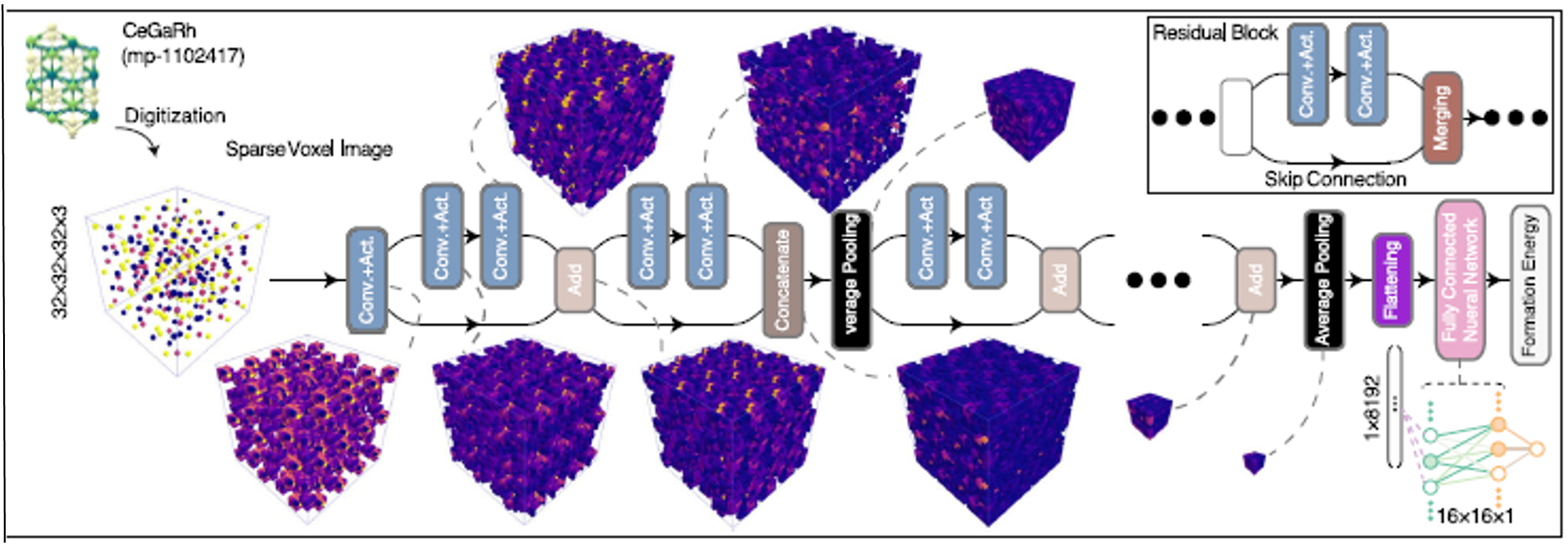Voxel Image Representation Learning of Crystalline Materials for Formation Energy Prediction

We demonstrate the use of visual image representation and deep convolutional neural networks (CNNs) in material property prediction. While machine learning methods have been utilized in materials research, this study shows the relatively unexplored application of computer vision techniques. By encoding crystalline materials using visual image representation and learning complex features using deep CNNs, our model accurately predicts the formation energy, a crucial material property.
Our research is groundbreaking in demonstrating that the underlying physicochemical information of materials can be learned solely from their visual representation, without the need for additional physical characteristics. This finding highlights the untapped potential of computer vision techniques in materials science and opens new possibilities for fully leveraging the power of machine learning. Moreover, our work suggests exciting prospects for generative machine learning. By utilizing the introduced visual image representation, reverse engineering of materials with target properties can be made.
